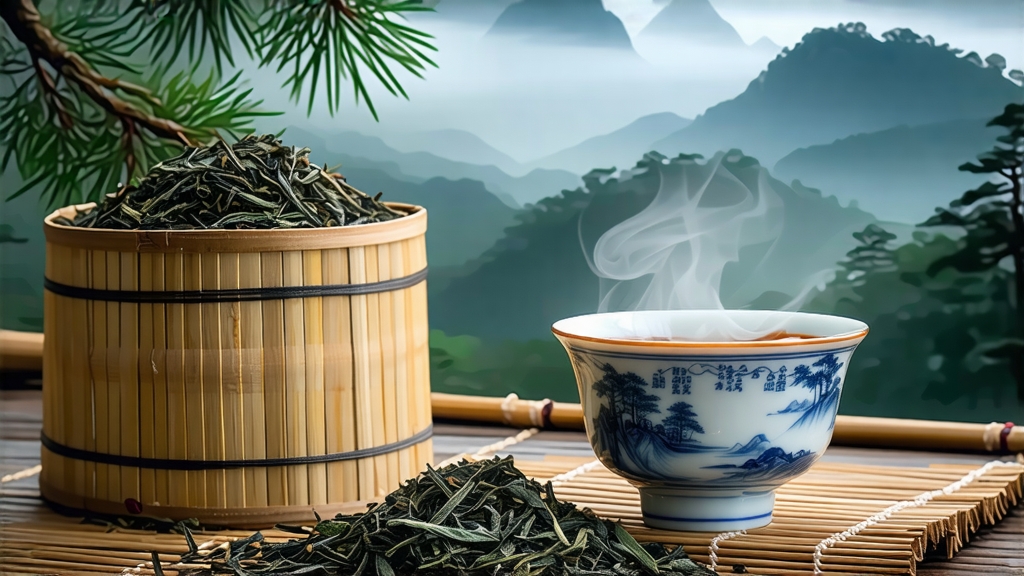
Ask most tea lovers to name a Chinese black tea and they will answer “Keemun” or “Yunnan Gold.” Fewer realize that every modern black tea traces its lineage to a tiny village in the Wuyi Mountains where, sometime around 1568, a panicked farmer dried his late-picked leaves over a pine fire and accidentally invented the world’s first fully oxidized tea. That village is Tongmu Guan, the tea is Lapsang Souchong, and its story is the story of how China taught the globe to drink black tea.
From Imperial Tribute to London Drawing Rooms
Ming-dynasty officials originally classified the smoked leaves as “foreign” because they departed from the green-tea orthodoxy. Yet the robust fragrance sailed beautifully across the Indian Ocean, arriving in Java and Amsterdam by 1604. When Catherine of Braganza brought a chest to Charles II’s court in 1662, the pine-smoked aroma became the scented signature of British aristocracy. Clones were planted in Assam and Ceylon, but connoisseurs continued to pay premiums for the authentic Tongmu leaf, a demand that financed the porcelain-and-silk trade at Canton and, indirectly, the East India Company’s entire tea enterprise.
Terroir: Why Only 120 km² Will Do
Tongmu Guan sits at 27° N latitude, hemmed by 1,500-metre granite cliffs that trap cool, moist air. The mean annual fog cover exceeds 220 days, slowing photosynthesis and concentrating amino acids. Soils are lateritic, rich in quartz and iron; the same rock that gives Wuyi yancha its “cliff rhyme” gifts Lapsang Souchong a subtle mineral bite beneath the smoke. EU regulations recognize the village as a protected designation of origin; leaves picked even five kilometres outside the canyon lack the trademark sweet ember note.
Three Faces of One Leaf
- Traditional Pine-Smoked Lapsang: Harvested in late April, withered over open pinewood fires, rolled, oxidized 4–5 h, then smoked again in wooden honglong (“dragon ovens”) for 8–12 h. The finished strip is glossy, black-blue, smelling of longyan (dragon-eye fruit) and campfire.
- Unsmoked “Zhengshan Xiaozhong”: A 19th-century adaptation for the Shanghai export market. Same leaf, same oxidation, but dried with hot air instead of smoke, yielding malt, cacao and dried-rose nuances. It is this version that now wins gold medals at world tea championships, proving the raw material can stand alone.
- Wild Arbor Lapsang: Picked from feral tea trees 2–3 m tall on the reserve’s upper slopes. Because the leaves are thicker, oxidation runs slower, developing notes of pine honey and raw walnut. Production is under 300 kg a year; most is pre-sold to Japanese and German collectors.
Craft: The Secret Is in the Resin
Only Masson pine (Pinus massoniana) and Chinese fir (Cunninghamia lanceolata) are legal for smoking. The wood must season for six months so that resin crystallizes; green wood produces acrid soot. Master smokers build a three-tier pine rack: bottom hearth, middle mesh tray for tea, top bamboo mat to buffer heat. They control temperature by flapping hemp cloths, keeping the leaf at 78–82 °C—hot enough to fix the enzymes, low enough to avoid scorching. One lapse of two minutes and an entire 40 kg batch tastes like asphalt.
Oxidation is equally delicate. After rolling, leaf cells rupture; polyphenol oxidase meets oxygen, turning catechins into theaflavins and thearubigins. The goal is 90 % oxidation—any less and the liquor stays astringent, any more and it collapses into flat sweetness. Craftsmen gauge progress by nose: when the cut grass smell fades and ripe peach appears, they slam 200 kg into a charcoal-heated wok for the “sha qing” kill-green that locks colour and aroma.
Brewing: Gongfu versus Teapot
Western tutorials often recommend boiling water and five-minute steeps; this maximises colour but buries the smoke. In Tongmu they use 5 g in a 120 ml gaiwan, 90 °C